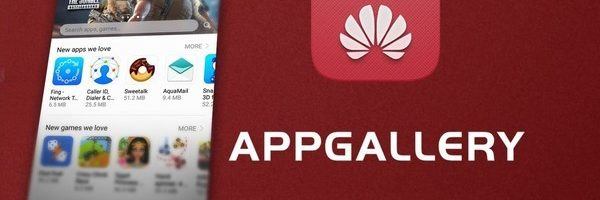Huawei to Google: We will make our own platform!

Huawei to Google: We will make our own platform!
Huawei is one of the leading manufacturors of smartphones in China and found itself in hot water recently when US Government trade restrictions led to US software companies preventing Huawei from using their software services. They have since responded by creating AppGallery, which replaces the Google Play Store.
Huawei is one of the leading manufacturors of smartphones in China and found itself in hot water recently when US Government trade restrictions led to US software companies preventing Huawei from using their software services. Previously, their phones had not only relied on Google’s App Store for all of their apps and services (including exclusive apps like Gmail, Google Calendar, Chrome, Google Maps, etc), but also Android itself. They have since responded by creating HMS Core, which is an alternative to Google Mobile services, Harmony OS, which is a first-party alternative to Google’s Android, and AppGallery, which replaces the Google Play Store.
App Gallery is a new two-sided mobile app platform connecting developers to consumers with a very big competitor, Google. They face a situation very similar to our platform simulation, if you imagine being only able to start after the other player was at round 10. What is their strategy?
Users:
They have used their existing strength as a mobile phone manufacturor to automatically load their software onto millions of phones. They claim that since launching in March, 2018, they now have a userbase of 400 million users. It is unclear however how many of these users have ever opened the app, or are even aware that it is installed. However, as it will be the sole platform on their future phone sales, many users will have no choice but to use it if they want a Huawei phone.
Developers:
Huawei has set a variable revenue sharing percentage with discounts for the first 2 years of the App Gallery, going from 0% to 20% in Education games, 15% to 30% in Gaming, and 0% to 30% in other areas. See full breakdown below:
| Developer Apps Categories | Standard Revenue Share Percentage (Huawei:Developer) | Preferential Revenue Share Percentage (Huawei:Developer) for the first 12 months | Preferential Revenue Share Percentage (Huawei:Developer) from month 13 to 24 |
| Education | 20%:80% | 0%:100% | 10%:90% |
| Gaming | 30%:70% | 15%:85% | 15%:85% |
| Media and Entertainment, Tools, Communications, Books and References, Photography, Food and Drink, Travel and Navigation, Travel and Accommodation, Shopping, Business, Kids, Finance, Sports and Health, Lifestyle and Convenience, Cars, and Personalized Themes. | 30%:70% | 0%:100% | 15%:85% |
https://www.xda-developers.com/huawei-giving-developers-bigger-revenue-share-preferential-policy
They have also begun working with third party hosting sites for Google Play Store .apk files to allow non-exclusive apps to be included in the App Gallery search results. Presumably, no revenue would be distributed to the developers of these publicly hosted applications. Many of these .apks were also not obtained with permission from developers and could result in poor developer relations.
Ultimately, Huawei likely had no choice but to develop their own platform to survive. They face very tough competition and are being forced to take drastic actions. Latest reports from Huawei state that it is also planning to invest as much as $1 billion to attract developers to its app marketplace.


